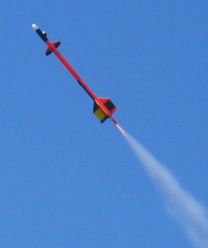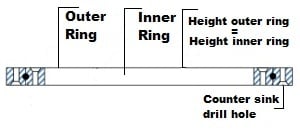FerdBerful
Member Member
- Joined
- Apr 8, 2012
- Messages
- 68
- Reaction score
- 0
I saw a rocket that had active vertical stabilization (once.) It was at a TCC launch (near Fresno, Ca)
I don't remember the guy's name but I remember talking to him about how it worked.
As engineer, I really admired the (relative) simplicity of how it worked.
The rocket had 4 triangle shaped fins in the front of the rocket. It also had 4 photo cells that produced
a voltage proportional to the amount of light they are seeing. The system was set up to use the fact that
the sky is brighter than the earth. If a photo cell said it was dark, the system would assume that the ground
is in that direction, if it was light, it would assume that the sky was in that direction.
The really cool thing was that the system was completely analog. No computer. I'm not a control expert but ...
I think some sort of differencing was use to control the servos that moved each set of 2 fins on opposite sides
of the rocket. (It's been 3 or 4 years now. I'm sure the guy gave more information than that, but it's a bit hazy now. )
Not sure it that's helpful. I hope it's at least interesting.
I don't remember the guy's name but I remember talking to him about how it worked.
As engineer, I really admired the (relative) simplicity of how it worked.
The rocket had 4 triangle shaped fins in the front of the rocket. It also had 4 photo cells that produced
a voltage proportional to the amount of light they are seeing. The system was set up to use the fact that
the sky is brighter than the earth. If a photo cell said it was dark, the system would assume that the ground
is in that direction, if it was light, it would assume that the sky was in that direction.
The really cool thing was that the system was completely analog. No computer. I'm not a control expert but ...
I think some sort of differencing was use to control the servos that moved each set of 2 fins on opposite sides
of the rocket. (It's been 3 or 4 years now. I'm sure the guy gave more information than that, but it's a bit hazy now. )
Not sure it that's helpful. I hope it's at least interesting.































